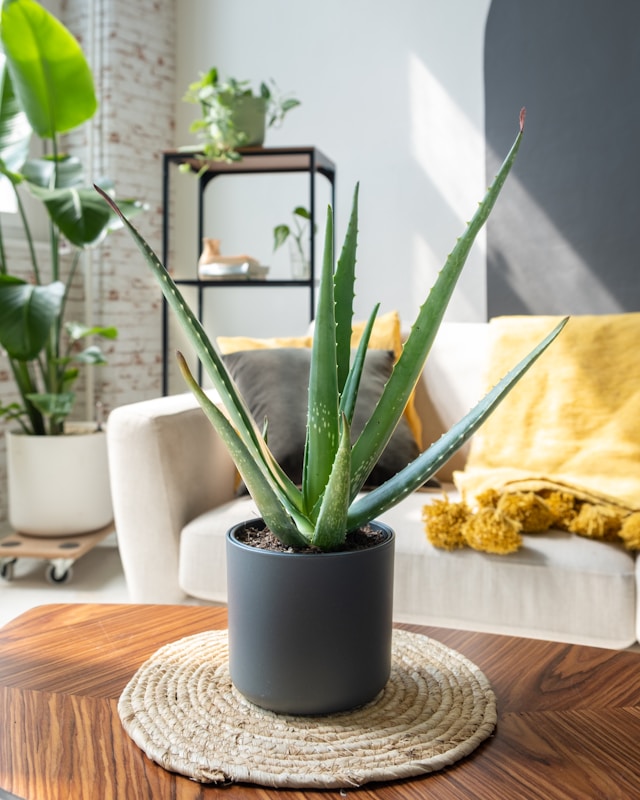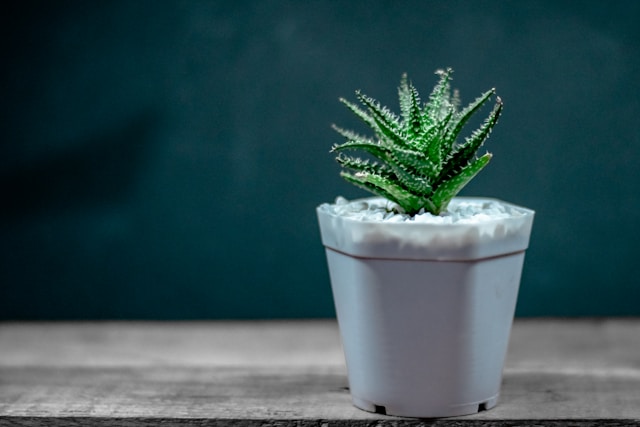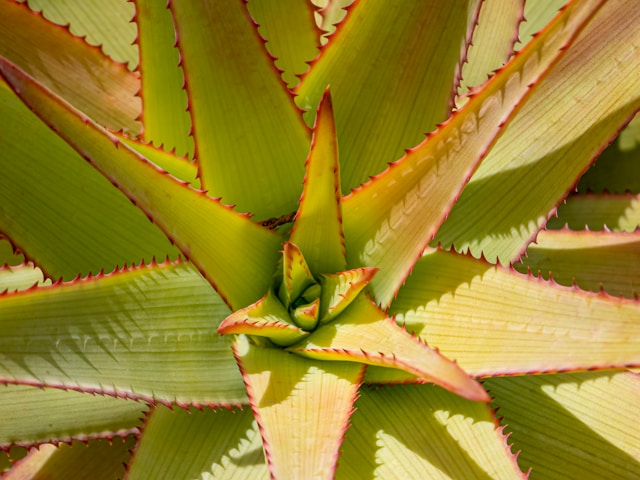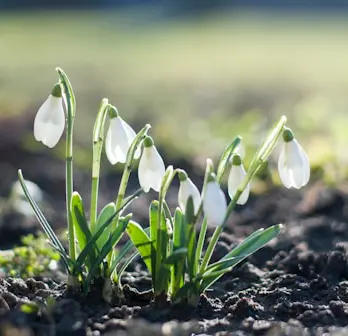Aloe vera is a low-maintenance succulent known for its healing properties and attractive appearance. It’s one of the most popular houseplants for beginners and seasoned gardeners. If you’re wondering how to care for aloe vera plants, we will walk you through everything you need to know, from planting and watering to ensuring optimal growth and health.
Choosing the Right Location for Aloe Vera
Aloe vera plants thrive in bright, indirect sunlight. Ideally, place them near a window that receives plenty of light, but avoid spots where they’ll be in direct sunlight for extended periods, as this can cause the leaves to scorch. Aloe vera loves warmth, so indoor environments are generally ideal, though it can also be grown outdoors in warm, dry climates.
If you grow your aloe outside, ensure it’s in an area with 6-8 hours of sunlight daily. If you live in an area with harsh, direct sunlight, consider placing it in a shaded spot during the hottest day.
Tip: Rotate your aloe vera plant regularly to ensure even exposure to light. This prevents the plant from leaning in one direction and promotes balanced growth.
Live Succulents Plants Live Plants (1G), Aloe Plant Live Succulent Plants Live Aloe Plants Live H…
Soil Requirements for Aloe Vera
Aloe vera plants need well-draining soil to prevent root rot, which is one of the most common issues with these succulents. The best
You can also make your own
- 2 parts regular potting
soil - 1 part perlite or sand
- 1 part coarse material (like pumice)
This combination ensures proper drainage, essential for a healthy aloe vera plant, and how to care for aloe vera plants.
Tip: Avoid heavy, moisture-retentive soils. If your potting mix is too dense, it will retain water, which can lead to root rot.
Watering Aloe Vera
One of the most critical aspects of how to care for aloe vera plants is understanding their watering needs. Aloe vera plants store water in their thick leaves, so they don’t need to be watered frequently. Overwatering is one of people’s biggest mistakes when dealing with aloe vera.
Water your aloe vera plant every 2-3 weeks, depending on the season and indoor conditions. The plant may require more frequent watering during the summer as the
Watering Tips:
- First, check the
soil by sticking your finger about an inch deep. If it feels dry, it’s time to water. - Water the plant thoroughly, ensuring the water drains through the bottom of the pot. Do not let the plant sit in standing water.
- Allow the
soil to dry out completely between watering sessions to prevent overwatering.

Potting and Repotting Aloe Vera
Aloe vera plants prefer to be slightly root-bound, so you don’t need to repot them frequently. However, if your plant has outgrown its current pot or the roots are becoming crowded, it’s time to repot.
When repotting, choose a pot slightly larger than the current one. The pot should have drainage holes to ensure excess water can escape. Repotting aloe vera plants every 2-3 years is typically sufficient.
Repotting Steps:
- Gently remove the aloe vera from its current pot, taking care not to damage the roots.
- Loosen the roots slightly if they’re tightly bound.
- Fill the new pot with a layer of fresh succulent or cactus
soil . - Place the aloe vera in the pot, ensuring the roots are covered with
soil but not too deep. - Water lightly after repotting and wait a week before watering again to allow the plant to adjust.
Fertilizing Aloe Vera
Aloe vera plants do not require much fertilizing. They can thrive without it in many cases. However, if you want to encourage growth, you can fertilize your aloe vera once or twice a year during the spring and summer months, which are its growing seasons.
Use a diluted, balanced fertilizer or one specifically designed for succulents. Avoid over-fertilizing, as this can harm the plant.
Back to the Roots 100% Organic Succulent and Cacti Mix (6 Quart) | Made in The USA | Premium Nutr…
Fertilizing Tips:
- Only fertilize during the growing season (spring and summer).
- Always dilute the fertilizer to half-strength to avoid burning the roots.

Common Issues with Aloe Vera Care
Overwatering
If overwatered, aloe vera is susceptible to root rot. Signs of overwatering include yellowing leaves, mushy stems, and a limp appearance. If you notice these signs, reduce your watering frequency immediately.
Sunburn
While aloe vera enjoys sunlight, too much direct sunlight can cause the leaves to brown or develop sunburn spots. If this happens, move the plant to a shaded area to prevent further damage.
Pests
Aloe vera plants are somewhat pest-resistant but can occasionally attract mealybugs, scale, or aphids. If you notice pests, use a neem oil spray or gently wipe the leaves with a cotton swab dipped in rubbing alcohol to remove them.
Propagating Aloe Vera
Aloe vera plants produce offsets, also known as “pups,” which are small shoots that grow from the base of the main plant. These can be easily propagated to grow new aloe vera plants.
Propagation Steps:
- Wait until the pup is about 2-3 inches tall before removing it.
- Gently separate the pup from the mother plant by loosening the
soil around it and pulling it out by the base. - Allow the pup to sit out for a day or two to let the roots dry slightly.
- Plant the pup in a small pot with well-draining
soil , and water lightly after planting.
Propagation is a simple and fun way to grow more aloe vera plants and share them with friends or family and you can use the same how to care for aloe vera plants advice on these pup plants.

Benefits of Aloe Vera
Aloe vera is a low-maintenance houseplant and offers numerous health benefits. The gel inside the leaves is commonly used to:
- Soothe burns and sunburns
- Moisturize skin
- Aid in minor cuts and wounds healing
- Improve air quality by removing toxins from the air in your home
Many people keep aloe vera in their kitchens or bathrooms due to its dual purpose as a natural healer and air purifier.
Back to the Roots 100% Organic Succulent and Cacti Mix (6 Quart) | Made in The USA | Premium Nutr…
FAQ: How to Care for Aloe Vera Plants
1. How often should I water my aloe vera plant?
Water every 2-3 weeks, allowing the
2. What type of
Use well-draining cactus or succulent
3. How can I propagate aloe vera?
Propagate aloe vera by separating pups (small offshoots) from the mother plant and repotting them in new
4. How much sunlight does aloe vera need?
Aloe vera needs 6-8 hours of bright, indirect sunlight daily.
5. When should I repot my aloe vera?
Repot every 2-3 years or when it outgrows its pot.
Conclusion
Aloe vera is a resilient and easy-to-care-for plant, making it a great choice for both new and experienced gardeners. Understanding how to care for aloe vera plants involves finding the right balance of sunlight, water, and
Whether you’re growing aloe vera for its aesthetic appeal or its medicinal uses, following these tips will ensure your plant thrives for years.

Brian believes the best days are spent outside with soil on your hands. He finds his rhythm in the details of the garden—from carefully tending to established plants to the excitement of propagating new varieties. A true outdoor enthusiast, Brian is here to swap stories, share advice, and celebrate the rewarding work of growing.






